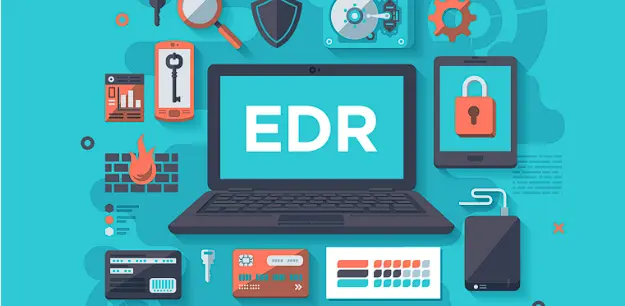Your organization's endpoints are exposed to continuous threats as one cyber attack happens every 39 seconds. EDR is one of the most effective cybersecurity solutions when protecting your endpoints. Enterprises hearing first time about this solution always want to know whether an EDR is a hardware or software. If you have the same question, it's time to understand what it is and how it benefits your organization. Let's continue reading and uncover vital details.
Get Complete Understanding
If you need a quick answer to this question, then you should know that EDR is software that includes tools to identify, investigate and analyze potential security threats on all the endpoints. This tool helps you prevent security breaches.

It stands for an Endpoint Detection and Response solution that you install across all organization's endpoints. This agent monitors all endpoints' behavior and activities and then records this data. All endpoint data is stored on a single dashboard so your in-house cyber team can analyze this data. Besides, this tool is integrated with analytics options. Thereby, it analyzes all the data and identifies potential threats. It helps your company identify threats, prevent them, and respond to them on time so that they won't cause any harm to your organization's endpoints.
What are the key features of EDR software?An Endpoint protection tool integrates all the main capabilities of EDR and EPP at one point. Here are some key components of this software.
Incident Triaging FlowToday, your cyber team installs various security tools across your endpoints, networks, and server stations. They deal with a wide variety of alerts. They analyze all the alerts and spend their time and organizational resources. The problem is that most of these alerts are false positives. When you have an EDR, then this software automatically triages malicious activities. An analyst can decide what threat to analyze first and which can wait.
Threat HuntingThe best feature of this software is that it allows you to hunt threats proactively. The problem with most security solutions is that they can only block some of the threats. This software offers top-level visibility across all endpoints. You can look into every single activity and behavior change, and thereby, you can identify threats often overlooked by other solutions. Once you have this endpoint protection tool, it is easy to detect potential threats and breaches.
Data Aggregation and EnrichmentSecurity teams get overwhelmed when they need to handle multiple threats. The Endpoint tool addresses this concern quite effortlessly. It empowers your team with the context behind threats. For example, when you have Xcitium EDR, you can look into the complete chain of events. It showcases the threat with tree structure. Thereby, you can understand what the infected endpoint and where a breach happened is. This information is crucial to analyze and remediating the threat as quickly as possible.
Integrated ResponseSecurity analysts can take immediate action against malware attacks through incident response capabilities. Many EDRs are designed with an incident response playbook, so your team can review this book and decide what response seems best in a particular situation.
Multiple Response OptionsAnother feature that sets this cybersecurity solution apart is its multiple response options. It sends alerts to the IT team so they can evaluate a potential threat and decide the response. Another response from this solution is that it quarantines a compromised endpoint and starts analyzing its behavior in the virtual environment known as a sandbox. Since this endpoint is separate from the rest of the machines, thereby even when it's infected, your other IT Infrastructure will remain intact.
Cloud-Based Control
EDR is software that empowers your team with cloud-based control. When you have remote employees, then one mistake from their end can disrupt the whole organizational operations. Organizations install this software on all the machines their employees use to handle this issue. Once the configuration is done, your team can isolate a compromised endpoint. Besides, they can look into the threat and analyze the context to stop this malware from spreading all across the network.
Final Verdict:
Endpoint detection and response tool is software installed on your organization's endpoint to protect your enterprise against spyware, malware, ransomware, and other attacks. Once you install this software, it helps you stop and eradicate potential threats. You can take complete idea of what’s going on across all endpoints and easily respond to threats on time through it.
